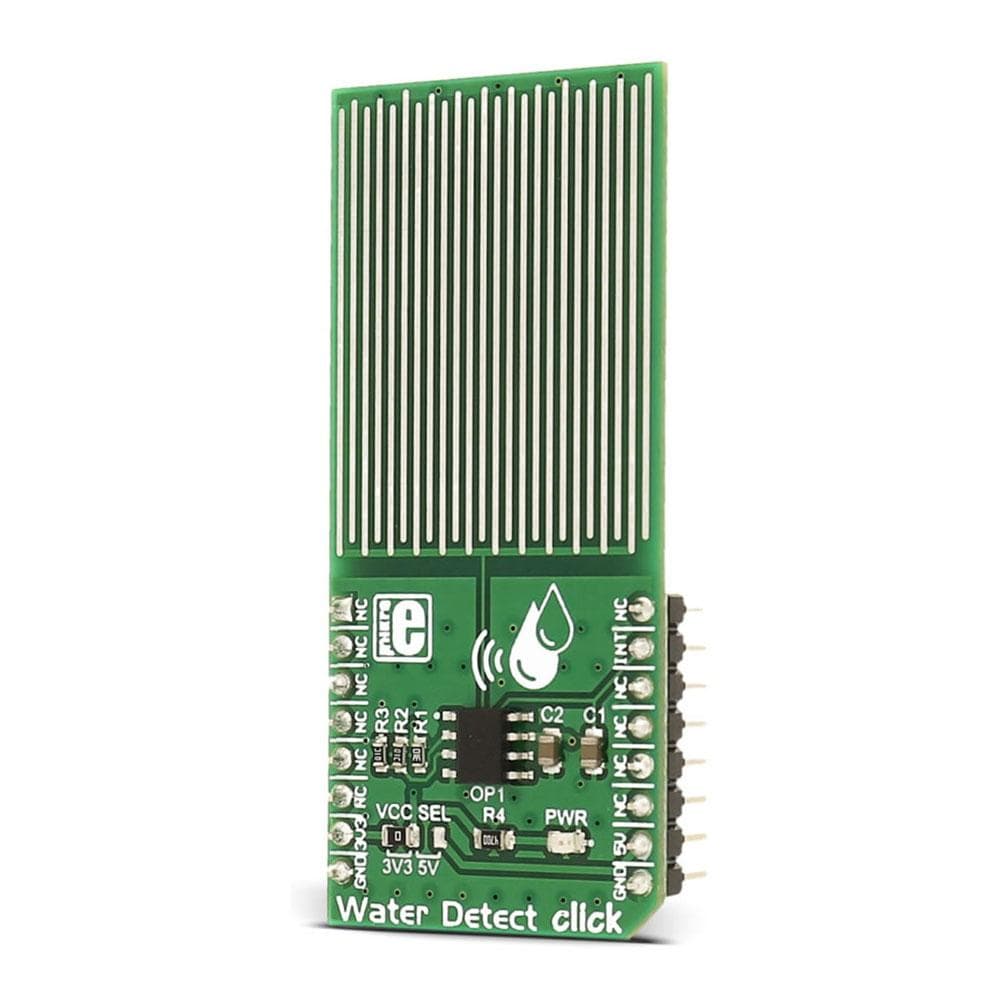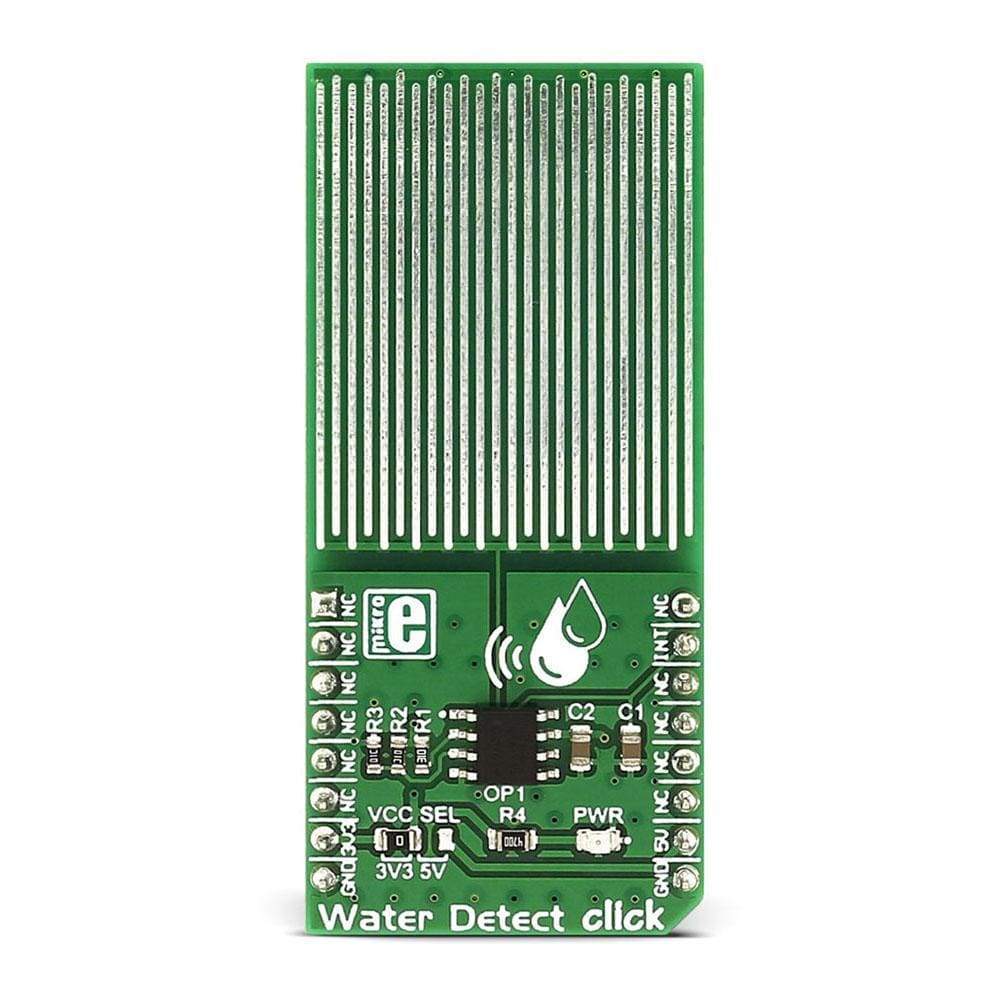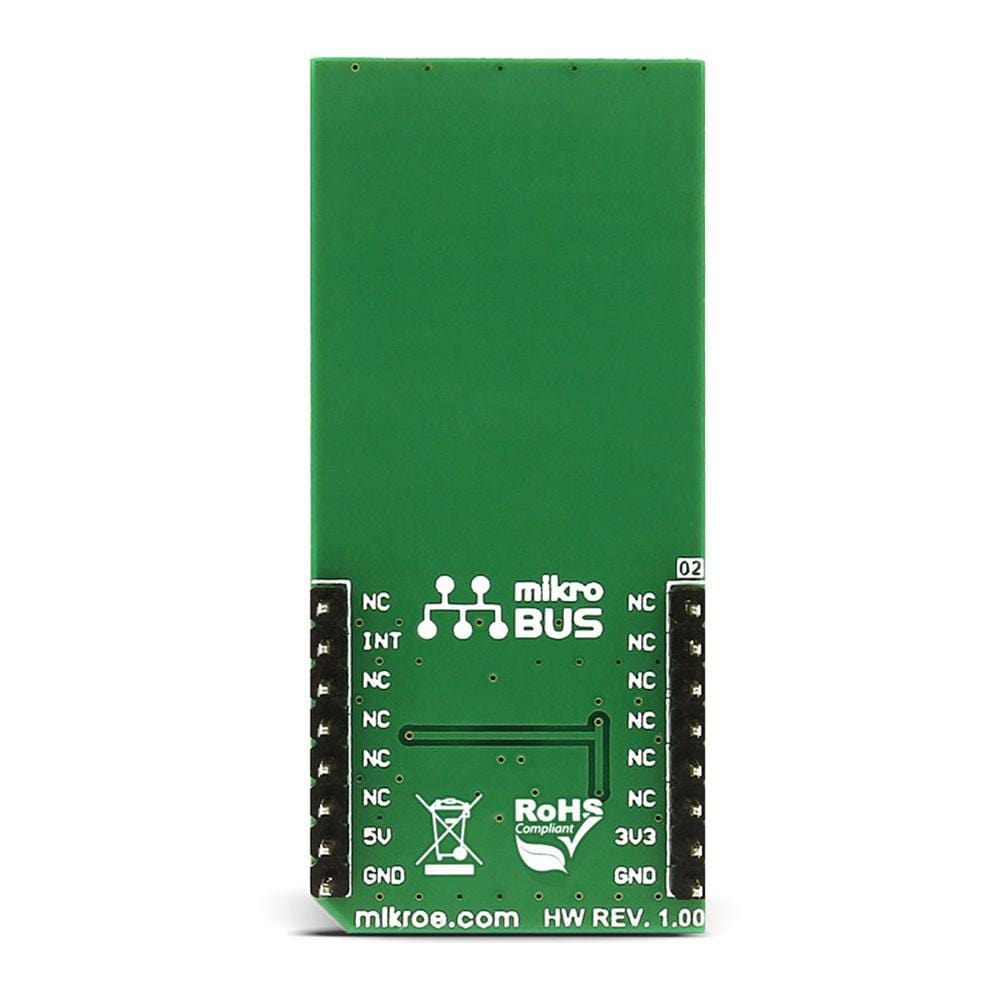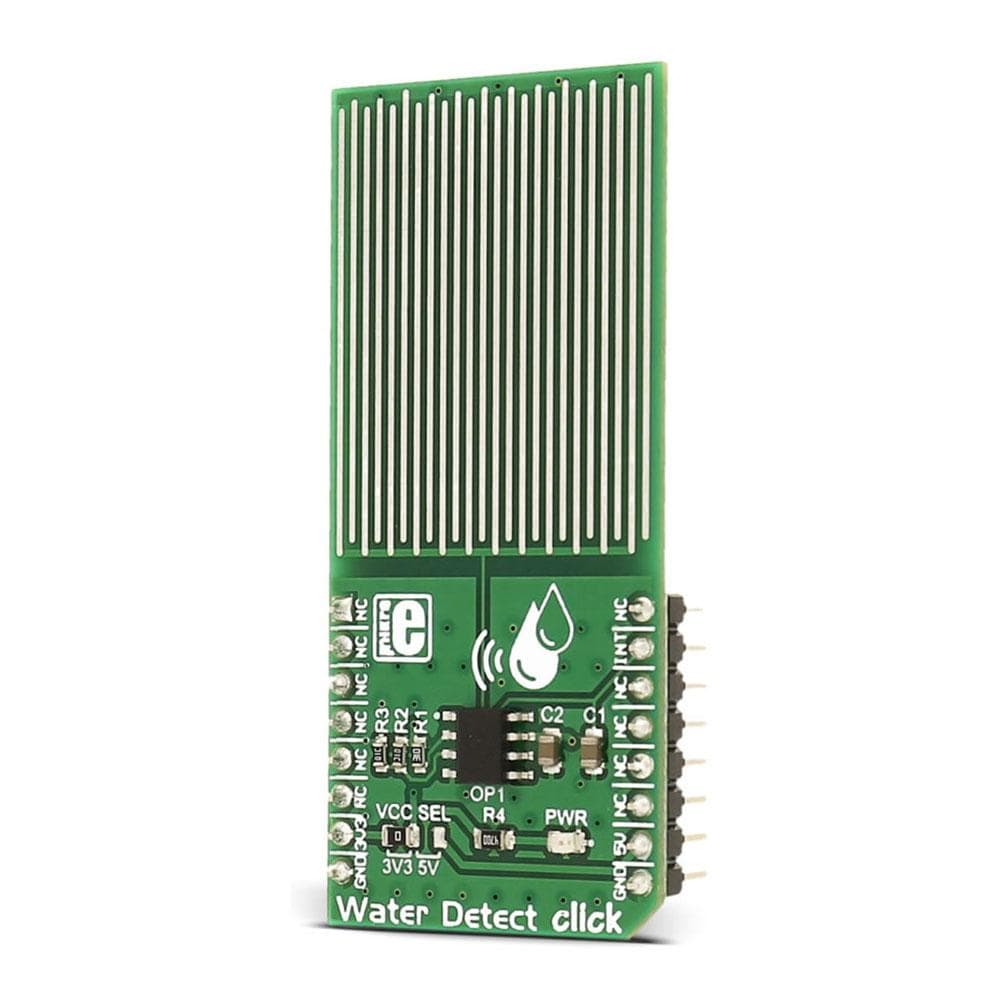
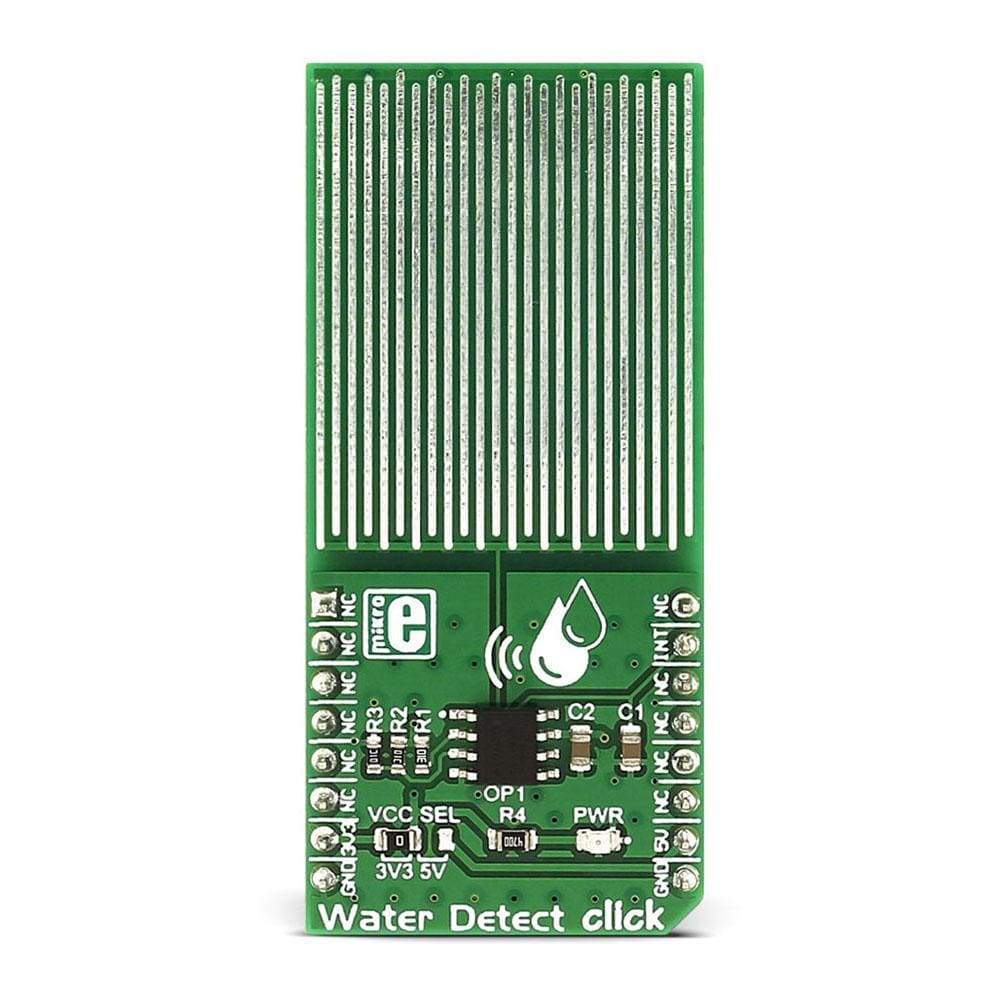
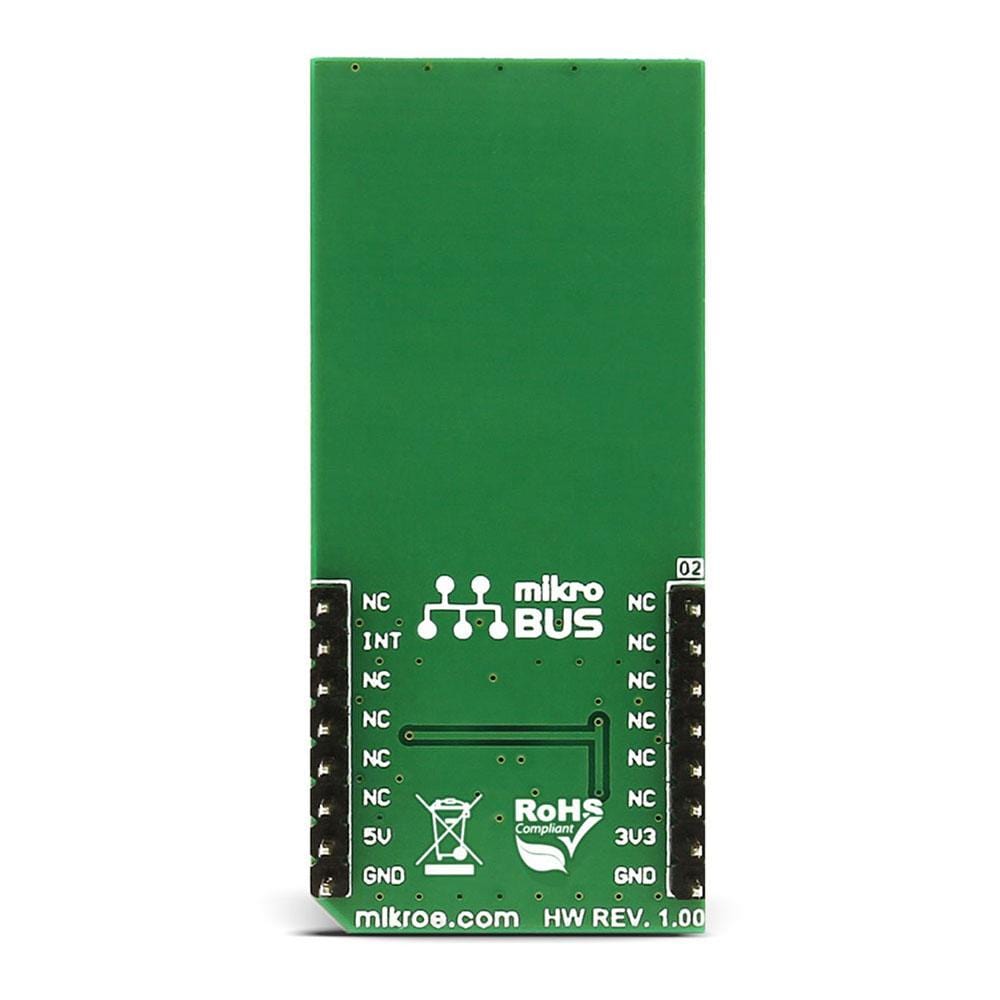
Overview
Avoid plumbing and water leakage disasters!.
The Water Detect Click Board™ is used for detecting water and other electro-conductive liquids. If the detection area is wet the output of Microchip's MCP606 CMOS op-amp will go positive, signaling the presence of liquid.
The Water Detect Click Board™ can be used as a household flood alarm sensor, rain detector for smart buildings or for water tanks that act as a limit switch for a pump.
Downloads
Vermeiden Sie Katastrophen durch Wasserleitungen und Wasserlecks! .
Das Water Detect Click Board™ dient zur Erkennung von Wasser und anderen elektrisch leitenden Flüssigkeiten. Wenn der Erkennungsbereich nass ist, wird der Ausgang des CMOS-Operationsverstärkers MCP606 von Microchip positiv und signalisiert so das Vorhandensein von Flüssigkeit.
Das Water Detect Click Board™ kann als Hochwasseralarmsensor im Haushalt, als Regenmelder für intelligente Gebäude oder für Wassertanks verwendet werden, die als Endschalter für eine Pumpe fungieren.
| General Information | |
|---|---|
Part Number (SKU) |
MIKROE-2786
|
Manufacturer |
|
| Physical and Mechanical | |
Weight |
0.022 kg
|
| Other | |
Country of Origin |
|
HS Code Customs Tariff code
|
|
EAN |
8606018711642
|
Warranty |
|
Frequently Asked Questions
Have a Question?
Be the first to ask a question about this.

